Popular Science | Data Privacy Protection Mechanism + Blockchain Application Scenarios
This article is the course content of the sixth class of Wanxiang Blockchain Hive Academy Open Class. Tutor Xie Hongjun (Chief Operating Officer of Matrix Element) has extensive experience in blockchain and cryptographic technology research. In the class, he first took everyone to review what the blockchain technology is, and analyzed the application of the blockchain in more than ten fields, and finally shared two private computing cases they are exploring.
The following contents are compiled from the on-site shorthand drafts, and some of them do not affect the original deletion:

Xie Hongjun
- Risk of Compound being overlooked: insufficient liquidity and bank runs
- Industry Blockchain Weekly: Banks Take the Lead, Hainan's Policies Are Most Aggressive
- The bridge for millions of users to enter the world of cryptocurrencies: an article to understand the Ethereum expansion solution ZK Sync
Hello everyone! I am very happy to share with you some of my personal and matrix elements in the research of blockchain and cryptographic technology research, as well as related application cases. Tonight we will discuss what value the blockchain will produce, in which areas it can land, and whether it can really land quickly.
In the digital age, data, as a new type of production factor, has become a strategic core asset for enterprises and countries. Data sharing and circulation have become rigid requirements. However, the contradiction between privacy protection and efficient data flow has become increasingly prominent. To a large extent, it restricts the realization of the value of data. Is there a technology that can perfectly answer and solve the above problems. Now it seems that blockchain technology and cryptography technology are very important and necessary.
Today my sharing is divided into three parts:
In the first part, I will review with you what the blockchain technology is;
The second part will share the application of blockchain technology in various industries;
The third part will share two privacy calculation cases.


Intercepted from Bitcoin white paper
Blockchain technology originates from the groundbreaking paper "Bitcoin: A Peer-to-Peer Electronic Cash System" published by a technology geek under the pseudonym Satoshi Nakamoto in 2008. The picture above is the Bitcoin white paper. By January 2009, Bit Network was online, which marked the birth of the world's first blockchain network.
So, what exactly is a blockchain? Simply put, blockchain is a kind of chain data structure. Use blockchain data structure to verify and store data, use distributed node consensus algorithm to generate and update data, use cryptography to ensure the privacy and security of data transmission and access, and use smart contracts composed of automated script code to program And operational data.
To truly understand Bitcoin, we must first understand the following four concepts:
Also called "peer-to-peer network" . This is two things with financial P2P, which refers to the characteristics of a point-to-point distributed network. In the Bitcoin network, no node is centralized and no node is indispensable. The nodes participating in the consensus have equal roles with each other. Each node stores the exact same public ledger. This is called decentralization. Peer to Peer network.
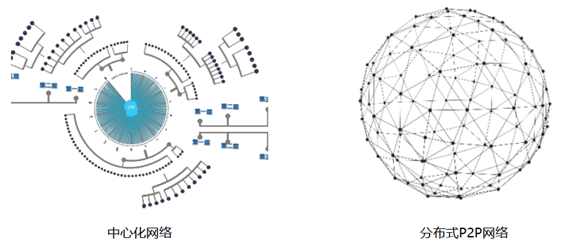
For example, when you go to the hospital to see a doctor, you need to use cash or scan the code and register by credit card. After the doctor sees the doctor, what doctor will say to do the check, then return to the window to pay for the check, and then check again. Look again. In fact, all the processes in it are payment processes. Everyone's health insurance card has "a huge amount of money", which is "sleeping money" that has accumulated for many years. The money in the medical insurance card and the existing RMB payment system were not connected, and online payments could not be implemented quickly, resulting in repeated queues. These process-oriented things cannot be realized peer-to-peer because payments cannot be made through.
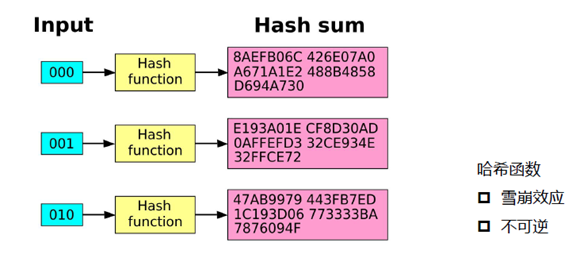
Also called "hash", "data hash", "data fingerprint". Hash is the data fingerprint. The function to calculate the data fingerprint is the hash function. It can process any length of input data into a fixed length of output data. This output data is the hash value. A good hashing algorithm has two characteristics: one is the "avalanche effect" and the other is "irreversible." The avalanche effect means that any small change in the input data will cause a huge change in its hash value, and irreversible means that the current computer technology cannot use the existing mathematical algorithms to infer the input data based on the hash value.
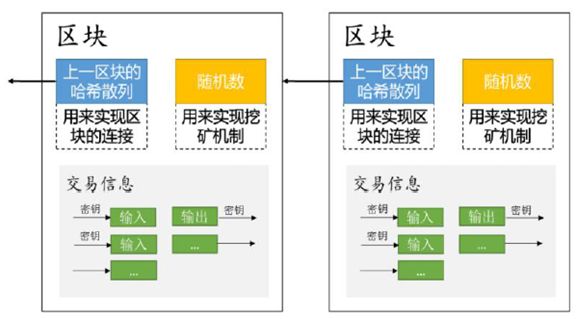
Let's look at these two blocks. Inside each block, it mainly contains the consensus transactions and block hash in the current block, as well as the hash of the parent block. Blocks are linked through the hash chain of the parent block to form a one-way chain. This is the blockchain.
You can look at the Blockchain separately. A Block is a block, which records transaction information, the hash information of the block itself, and the information of the previous block. All the blocks are linked into a block by the hash value of the previous block. The chain structure is the so-called Blockchain.
Commonly known as mining. The generation of a new block in the blockchain means that one of the nodes gets the right to book the block. The process of obtaining accounting rights is "mining", which solves a pre-set mathematical problem in a hash collision manner through the node's own computing power resources. Successful settlement means that mining is successful, and the first successful node will be returned to the system with a certain value return (Bitcoin's current return is 12.5). In this way, the system encourages all nodes in the network to participate in the mining process.
Another typical representative of the blockchain network is Ethereum. Ethereum is an open-source open blockchain platform with smart contract functions proposed by Vitalik Buterin inspired by Bitcoin. Although Bitcoin is the earliest proposed blockchain technology, the Bitcoin network is not enough to build more advanced applications. Ethereum is mainly designed to solve the problem of insufficient Bitcoin ecosystem scalability. Ethereum runs smart contracts deployed on the Ethereum blockchain through the Ethereum Virtual Machine (EVM).
According to the "Blockchain Reference Architecture" of the Electronic Standardization Institute of the Ministry of Industry and Information Technology, blockchain is divided into public chain, alliance chain and private chain.

Bitcoin and Ethereum are public chains, but at the current stage of enterprise-level landing and physical docking are mainly alliance chains. Compared with the public chain, the alliance chain has two important differences: generally there is no cryptocurrency, and the node access mechanism. In the affiliate chain, there is generally no cryptocurrency, and to become a node in the affiliate chain system, it must be reviewed by the management node in the system that assumes the role of administrator, before it can join the affiliate chain network. From the perspective of application scenarios, the alliance chain has more advantages and is suitable for inter-enterprise applications.
In September 2015, the U.S. technology company R3CEV joined more than 40 world-renowned banks including Morgan Stanley, Goldman Sachs and HSBC to jointly establish an enterprise blockchain alliance, R3 Corda, which is in the blockchain world. The first publicly announced alliance chain. In December of the same year, the Linux Foundation also led the launch of another alliance chain project, Hyperledger, which has attracted technology and financial companies such as IBM, Intel, JP Morgen, Wells Fargo, Huawei, and Baidu.
There are also some challenges in the current development of blockchain technology: blockchain technology innovation is becoming more and more active; it is still being tried in scenarios and has few landing applications; the infrastructure is not perfect; efficiency and security are low; laws, regulations and technical standards are still incomplete.
But its future development trend must be "technical integration." Cloud computing provides the infrastructure. IOT mainly solves the problem of information collection and perception. Blockchain mainly solves the problem of credible information transfer. Big data provides data security protection and resource provision. Artificial intelligence mainly solves information intelligence. Problem solving.
For example, why is so much data still facing data that does not satisfy training? One is because others are unwilling to share data and are afraid of data leakage. The owner of the data is often a large institution or government department. Of course, there is a large amount of data in the Internet platforms and manufacturers, and everyone will not share each other. Second, if I share the data, I do n’t know where and how many times you use it. . As a result, data flow and willingness to trade are particularly low. Blockchain can solve the credible transmission of data, including transactions, clearing and settlement, and the blockchain can do it in the future.
In conclusion, blockchain is a distributed system based on cryptography. Blockchain technology is an important part of the next generation computing architecture. It is similar to the distributed network operating system level computing architecture infrastructure. It can also be understood as the "super data bus" to achieve future multi-source heterogeneous data interoperation. Problem, while supporting privacy protection based on provable cryptography and complex computing theory.
Application of blockchain in various industries


This is a collection of data reported by Facebook abroad. At present, the Internet companies in the world collect data in this way. In the annual reports of Facebook and Google, advertising revenue accounts for more than 90%, relying on the data behind to support business models.
On May 25, 2018, the European Union introduced the General Data Protection Regulation (GDPR), which is aimed at the supervision and punishment of privacy breaches. At the Wuzhen Internet Conference in October this year, Deputy Minister of Justice Zhao Dacheng introduced that the "Privacy Protection Law" was officially included in the legislative plan of the 13th National People's Congress. Once it enters the legislation, there must be measures for supervision, supervision and punishment. Internet companies are required to complete the reform of data privacy protection as soon as possible, and they must ensure that they are used under the conditions of legal data acquisition, use, and storage.
The previous talk is about personal privacy data. Let's take a look at big data. In the past few years, big data trading centers across the country have swarmed, but the business of big data trading centers is not much. why? Because big data transactions face these problems: the definition of the scope of data circulation and tradability, the definition of data ownership, the evaluation and pricing of data quality, the evaluation of data quality, the pricing of data, data security, data transaction standards and legislation.
Most Internet services are now free. Why are they willing to provide services for free? Because they collect some information from users. In exchange for convenient and free services for private data, this is the transaction, otherwise there is no free lunch in the world.
Is there a way to protect data privacy and share the value generated by the data? Regardless of whether you trade or circulate or calculate, the value generated must be distributed to the data producers.
Due to data leakage and self-interest considerations, institutions and entities with large amounts of data are reluctant to open their internal data, especially important data. Any single institution can only master a part of the complete set of data, and only by collaboratively computing multiple data can the data value be maximized.
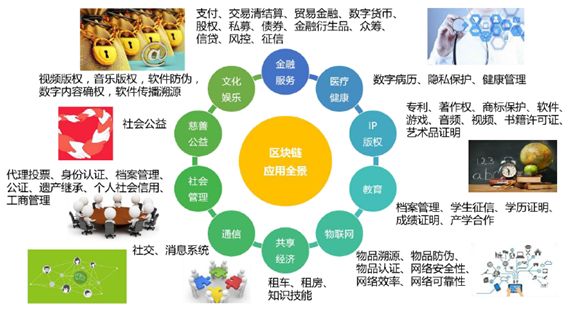
Intercepted from "China Blockchain Technology and Application Development White Paper (2016)"
"China's Blockchain Technology and Application Development White Paper (2016)" introduces what blockchain can do in the end. Blockchain can do a lot. Let's look at a few cases together.
From a data perspective, what can a blockchain do in the context of cryptography and privacy protection?
Data records : Data information, file materials, picture records and other information can be recorded and stored on the blockchain, and retained in the address of each user account. The information stored on the blockchain can be verified by hash value.
Data authentication : The information recorded on the chain can be used to verify the signature of the data by other participants, further improving the credibility of the data.
Data verification: Quickly identify information tampering by verifying and matching the hash value.
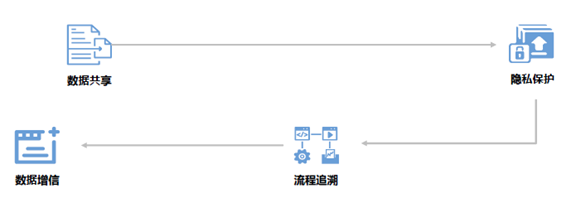
The multi-node feature of the blockchain can ensure real-time sharing of data between multiple parties; and it can implement data and account privacy protection settings at different levels such as users, business, and transaction objects; based on the recording and authentication of data on the chain, it can be set through smart contracts , Realize the association of related data on the chain according to the unique identifier, and build the traceability of the data; users or demanders can directly access the data records on the blockchain through the DAPP application to provide data credibility.
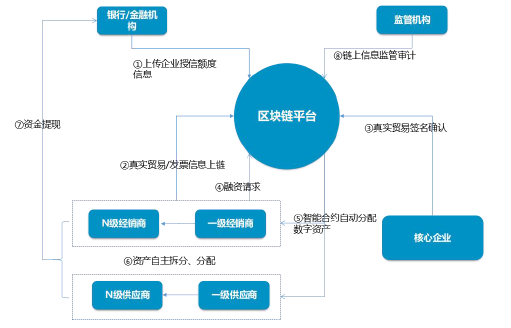
The alliance chain established through the blockchain can connect core enterprises, multi-tier suppliers, factoring companies, banks, ABS and other related institutions, and through the registration, confirmation, and digital operation of assets on the chain, the issuance and circulation of assets on the chain Operations such as splitting, splitting, and redemption are synchronized in real time, making the information between related parties more symmetrical. The mutual trust mechanism established by technology immutability and non-repudiation can open the trust transmission channel in supply chain finance, digitize financial assets (bills) that were originally inseparable, improve asset liquidity, and reduce financing costs for SMEs.

"MPC (Secure Multiparty Computing)" is a particularly hot word last year and this year. The combination of blockchain + MPC enables the original data to achieve collaborative computing and data privacy protection among multiple nodes without the need for collection and sharing. . At the same time, it can protect data ownership and solve problems such as excessive data collection, data privacy protection, and single point leakage of data storage in the big data mode.
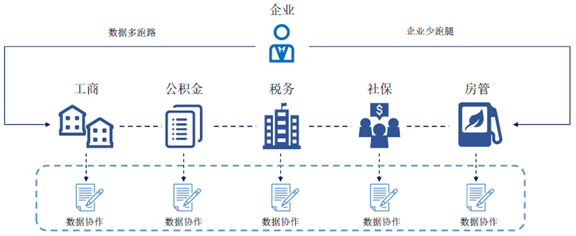
The application of blockchain + MPC can also effectively connect the problem of data island sharing or clustering between government departments. Without data clustering and data storage migration, provide enterprises with data information or transactions. The ability to co-operate; solve the "last mile" of government affairs information sharing, and improve the current situation of reducing long running and repeated submission of materials.
Many cases can be found online. In the data registration process, based on the blockchain technology, the information of each production process is recorded to form a comprehensive information file synchronization and management of digital data, production data, circulation data, and consumer query data. It also supports scanning equipment to directly add information after reading the information. Sign the chain to ensure first-hand information sources. In the information query and verification phase, users can independently select alliance nodes for information query. The data processing logic is maintained through smart contracts to provide users with a source data verification channel.
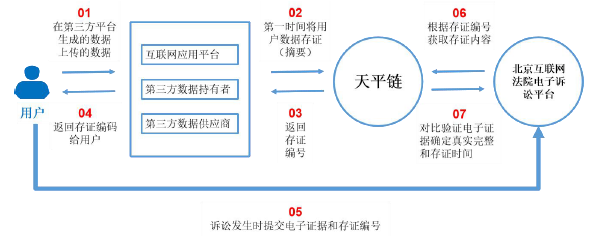
As a case of evidence, the Beijing Internet Court recently connected to the “balance chain”, and the electronic evidence is immediately uploaded to the chain, secure and confidential, and difficult to tamper with; the court's entire record is controllable, and the electronic evidence acceptance rate is high; and multiple platforms Standardized forensics, simple process and low cost.
Hospital data will not be shared with enterprises, and regulatory agencies promote hierarchical diagnosis and treatment. Looking at small diseases and small places, looking at major diseases and large places, many people vomit that people have been deprived of their right to choose a doctor. In addition, there are also incomplete drug traceability systems; patient medical information is not communicated between hospitals, repeated inspections, and increased patient burdens; paper bills and prescription circulation are not conducive to preservation, and have security risks.
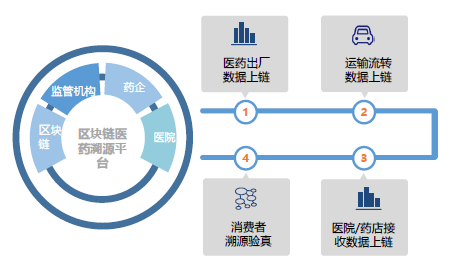
What happens if the data owned by these people is shared using the blockchain?
1. Real-time tracking and supervision of drugs combined with the Internet of Things technology to assist quality supervision and eliminate counterfeit medicines.
2. While ensuring the privacy of patients, realize desensitization of patient medical information and sharing between institutions, reduce repeated inspections, and improve diagnosis and treatment efficiency.
3. Important notes and prescriptions are stored on-chain, and the prescriptions cannot be tampered with.
4. Trusted data storage and smart contracts make medical insurance payments more accurate and convenient.
5.Using blockchain decentralized storage to restrict access to data to ensure the safety of medical information, diagnostic records, genetic data and other medical information.
The combination of hospital data and other institutions is very valuable. For example, hospital data is placed in the local area through clear text, and drug manufacturers are provided for new drug development. Because more data is available and the time is faster, pharmaceutical companies can put new drugs on the market faster, and the final drug price is also It will decrease and the burden on the patient will also decrease.
As another example, the cost increase of hospital resources waste caused by chronic diseases in our country is unimaginable. Our country's medical system only guarantees basic medical care, and a large number of diseases cannot be ignored. The insurance company is willing to develop chronic disease insurance, but he does not have data training models, cannot accurately develop insurance, cannot accurately price insurance, and cannot accurately market insurance. If he has the data of the hospital, he can develop an insurance that is suitable for common people's chronic diseases (such as high blood pressure), then the burden of seeing a doctor will be lighter.
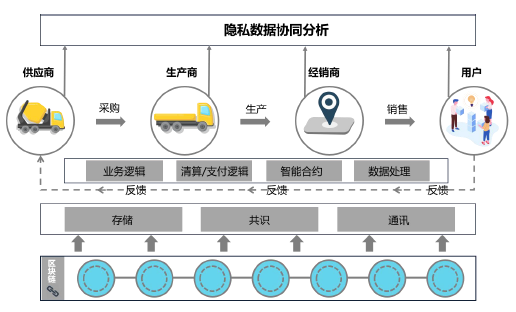
The supply chain is to solve the full chain is long and slow and requires a large number of certifications and qualifications to conduct fund placement and tracking. Blockchain and cryptography can solve this problem, and the demand flows. Everyone can agree on a chain. Solved quickly. The supply chain process is stored on-chain to ensure the traceability of the entire process; it cannot be tampered with to facilitate subsequent audits of the entire supply chain system; as a Turing-complete language for the blockchain, smart contracts can implement clearing logic and business logic Integrate with liquidation logic to achieve the effect of liquidation when the business is completed, which can greatly reduce liquidation costs; for different parties in the supply chain system, when it is necessary to jointly use the private data held by one party, cryptography 'S privacy computing technology can achieve multi-party collaborative analysis of private data without revealing the original data information, and solve the privacy issues involved.
For example, the Wanxiang Blockchain supply chain financial service platform is an independent research and development of Wanxiang Blockchain. It is a financial service platform designed for each role of the supply chain. It aims to focus on the core enterprises and based on the actual trade background. A receivable debt transfer financing platform based on the chain relationship formed in the transaction and industry characteristics. The platform has attracted many outstanding Chinese companies to settle in, and has realized cost reduction and efficiency improvements, and industrial upgrading. This model has solved the pain points such as the long time occupied by strong companies in the traditional manufacturing industry supply chain and affecting the overall supply chain coordination efficiency. The allocation and efficiency of financial resources among enterprises in the supply chain. As far as I know, the amount of financing on the platform has exceeded 200 million yuan.
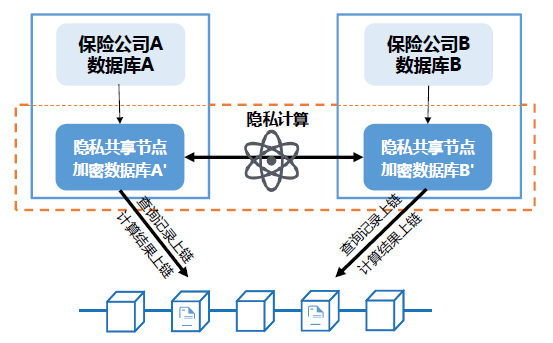
The identity service was performed by us and the Medical Insurance Association some time ago, but later it was discovered that black and white lists were shared between banks. There are many alliances between different organizations in the same industry, and everyone wants to use each other's user information without sharing information. MPC can solve this problem very well, and output the results to the service provider. Then all calculations and transactions are completed. You are responsible for the query and pay a certain query fee. The fee is cleared in time on the system. Settle transactions. This solution can be extended to different industries, including the medical industry and insurance.

Blockchain + IoT can solve data ownership issues, data privacy protection issues, data credibility issues, data security sharing issues, data collaborative computing issues, data settlement issues, and more.
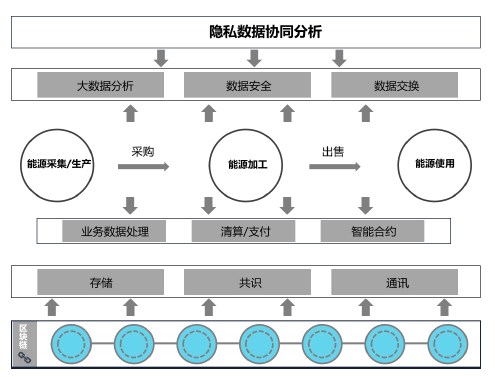
Distributed energy is a big blockchain to solve the problems that can be solved. There are many energy sources in the future, such as thermal power, hydropower, solar energy, etc. The current practice of these power sources is to connect to the national grid. But new energy power is unstable. When there is wind, there is a lot of electricity. When there is no wind, solar power comes, which has a great impact on the power grid. Using blockchain technology to achieve distributed energy, the solar power on the roof of your house can be automatically sold to other neighbors in need of electricity through the local community network and settled immediately after the transaction. This will not only reduce the impact on the national grid, but also effectively use energy.

Blockchain can provide compliance training data and algorithms for machine learning, solve data privacy protection issues, data clearing and settlement issues, and realize data and algorithm sharing.
Blockchain can not only help the algorithm find available data, but also help the algorithm trade and circulate on the platform. Smart contracts can solve the problem of clearing and settlement. The problem of data protection is solved, and the willingness of the data to provide services to the algorithm is greater.

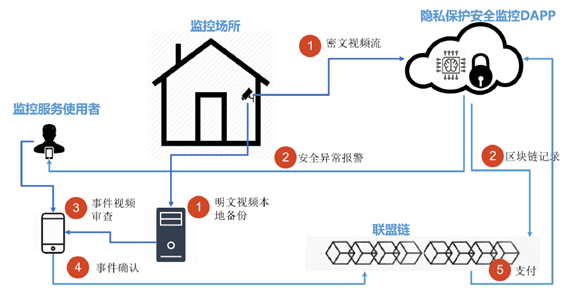
There are many monitoring devices on the street. How to use privacy computing and privacy AI technology? The first thing to do is to protect the privacy of behavioral data at the data collection end. For the regulatory authorities, it should be able to achieve penetration. After collection, monitoring, and security alarm measures, distributed security is better implemented based on data privacy protection.

Have practitioners in the medical industry asked whether blockchain can solve the medical problem? The state has regulations on the format and standards of electronic medical records, but in fact, the electronic cases between hospitals and hospitals, departments and departments, and doctors and doctors are different. How to solve this problem. The same goes for imaging. How can the captured images be intelligently identified by AI and assisted diagnosis?
I talked to a hospital colleague about how to diagnose facial hemiplegia remotely? Many people with facial hemiplegia are reluctant to go to the hospital. This disease causes mental illness and is reluctant to go out. But now there is a technology that is remote diagnosis. The camera is an IoT device that makes you laugh, lets your mouth go left, right, up, or conduct behavior training. However, in this process, patients will show ugliness, which is a burden for patients, and the protection of patients' privacy may not be adequate. If future user privacy AI technology protects the privacy of patients and conducts behavior training, it will reduce the burden on patients and increase the chance of recovery.
In modern society, a large amount of data is generated, and more and more people pay more and more attention to the protection of their privacy data, so privacy protection technology, privacy calculation, and privacy AI are coming out. Some data transparency is possible for regulators and supervisors, but there is no obligation to provide data to commercial organizations. The core is to solve these problems: secure storage of data, unified identity authentication, privacy protection, value after data circulation, and fast, accurate and unbiased clearing and settlement.
Finally, I would like to emphasize that all technology application logic is the logic of data flow and the logic of clearing and settlement. Solving this logic will solve the problems of complex processes and unwillingness to share in real society and the real economy. Serve the people and benefit the real economy. thank you all!
We will continue to update Blocking; if you have any questions or suggestions, please contact us!
Was this article helpful?
93 out of 132 found this helpful
Related articles
- The demand for cryptocurrencies may skyrocket! What else does Deutsche Bank report "Imagine 2030" imply?
- The "Bitcoin Giant Whale" gray company continues to move in 2019, indicating that there may be great changes in 2020?
- Perspectives | Stateless Clients: New Trends in Ethereum 1.x
- One article to understand why 2019 is the year of DeFi and 2020 is the year of DeFi
- China Europe Business School Gong Yue: DAO and Alliance Chain, a dispute that began with Hayek and Keynes
- Vitalik's latest thinking: what kind of subversive effect the second party payment will bring
- Nobel laureate Tirole: Humanity is facing a new round of currency war, this round of war is likely to include cryptocurrencies




